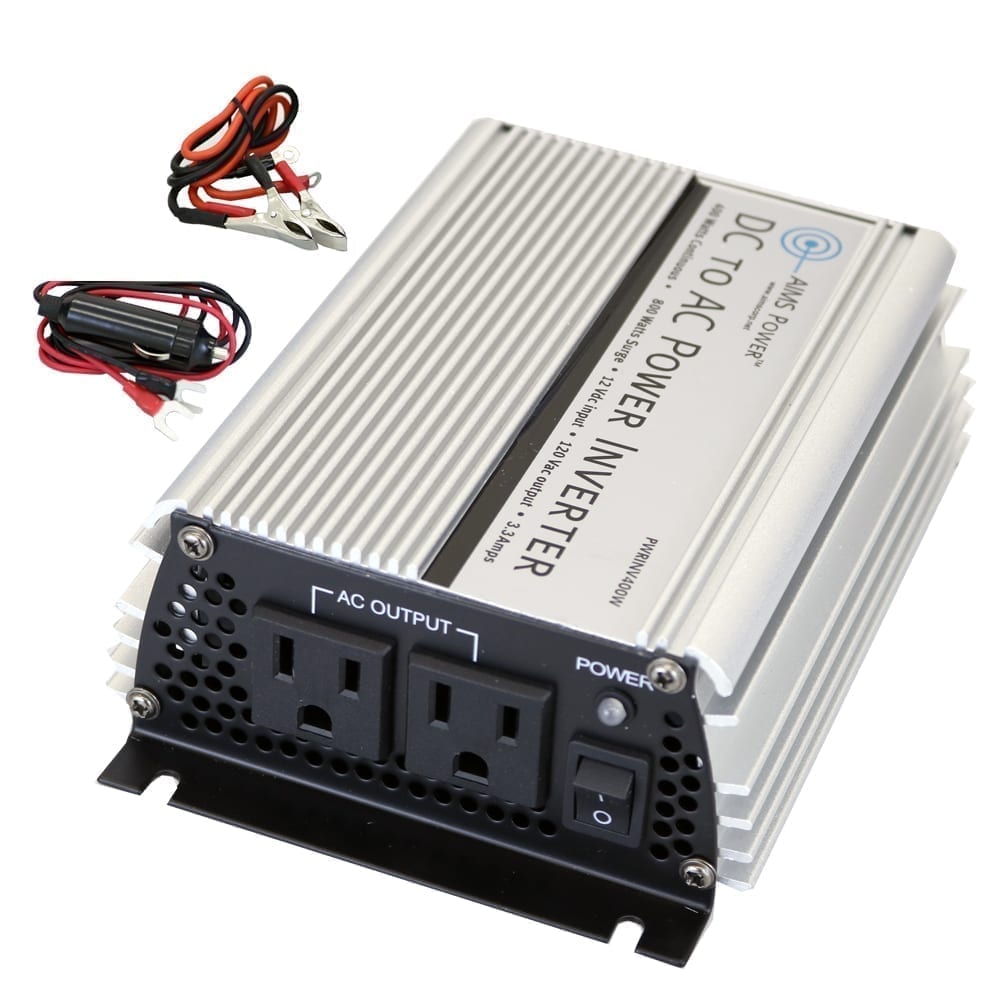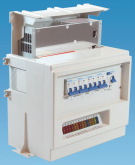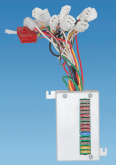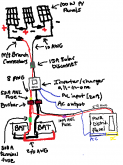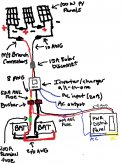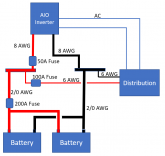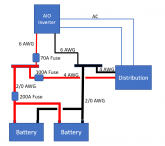Yea, quite blurry zoomed in. Is that a MPPT controller/inverter under the panels? If so : Does it have an internal transfer switch? If so:
For your AC input (assuming this is a 30amp rig IE only 1 AC leg not 2 like a 50amp rig) you take out your circuit box (don't be plugged in), locate your MAIN breaker (30a) then disconnect the black from the breaker, white from the bar AND ground from the bar. Wire nut those wires individually to a length of 10/2 Romex (has black, white, copper ground wires) that Romex then connects into the AC INPUT of the inverter, black is L1 white is N1 and ground is that screw or whatever, just make a copper wire tail, screw it to ground and wire nut your INPUT and OUTPUT ground to the tail. Then take a fresh peice of 10/2 Romex and wire that black to L2, white to N2 and ground as already stated and run that Romex back to the panel and Black goes back into the breaker, white to the neutral bar and bare copper to ground bar. And it's done. Your whole house can now be run from the inverter.
If it happens to be a charger also disconnect your internal converter charger.
TLDR: Don't do any of the above if you're afraid of electricity, drunk, on drugs, color blind, colour blind or just flat out blind.




